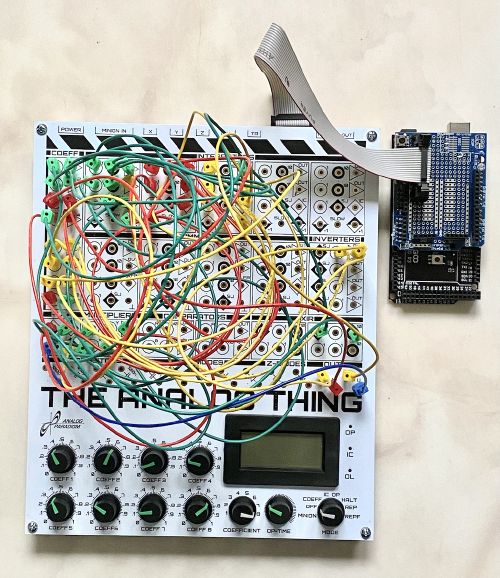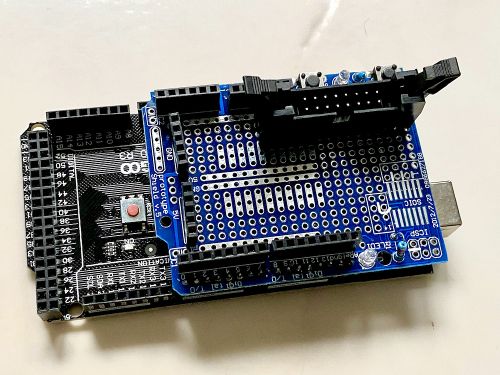Difference between revisions of "Hybrid Computer"
From TheAnalogThing
| Line 2: | Line 2: | ||
[[Category:Fundamentals]] | [[Category:Fundamentals]] | ||
| + | |||
| + | [[File:Hc_setup.jpg|center|500px]] | ||
This section describes a simple yet quite powerful hybrid computer consisting of THE ANALOG THING and an attached Arduino Mega 2650 micro controller board. Since THE ANALOG THING features a dedicated connector for attaching an external digital computer, only a few connections between this HYBRID connector and the Arduino are required to setup the hardware: | This section describes a simple yet quite powerful hybrid computer consisting of THE ANALOG THING and an attached Arduino Mega 2650 micro controller board. Since THE ANALOG THING features a dedicated connector for attaching an external digital computer, only a few connections between this HYBRID connector and the Arduino are required to setup the hardware: | ||
| Line 26: | Line 28: | ||
| 16 || MIC || D4 | | 16 || MIC || D4 | ||
|} | |} | ||
| + | |||
| + | These connections were made using a piggy back board suitable for an Arduino Mega 2650 which only contains a 2x8 pin header and the connections listed in the above table: | ||
| + | |||
| + | [[File:Arduino_hc.jpg|center|500px]] | ||
Revision as of 10:04, 14 October 2021
A hybrid computer is a computer consisting of an analog computer and a digital computer. The two worlds are connected with ADCs/DACs (analog to digital/digital to analog converters).
This section describes a simple yet quite powerful hybrid computer consisting of THE ANALOG THING and an attached Arduino Mega 2650 micro controller board. Since THE ANALOG THING features a dedicated connector for attaching an external digital computer, only a few connections between this HYBRID connector and the Arduino are required to setup the hardware:
| HYBRID pin | description | destination on Arduino |
|---|---|---|
| 2 | analog x output | AnalogIn 0 |
| 4 | analog y output | AnalogIn 1 |
| 6 | analog z output | AnalogIn 2 |
| 8 | analog u output | AnalogIn 3 |
| 9+10 | GND | GND |
| 13 | enable hybrid mode | D2 |
| 14 | MOP | D3 |
| 16 | MIC | D4 |
These connections were made using a piggy back board suitable for an Arduino Mega 2650 which only contains a 2x8 pin header and the connections listed in the above table:

